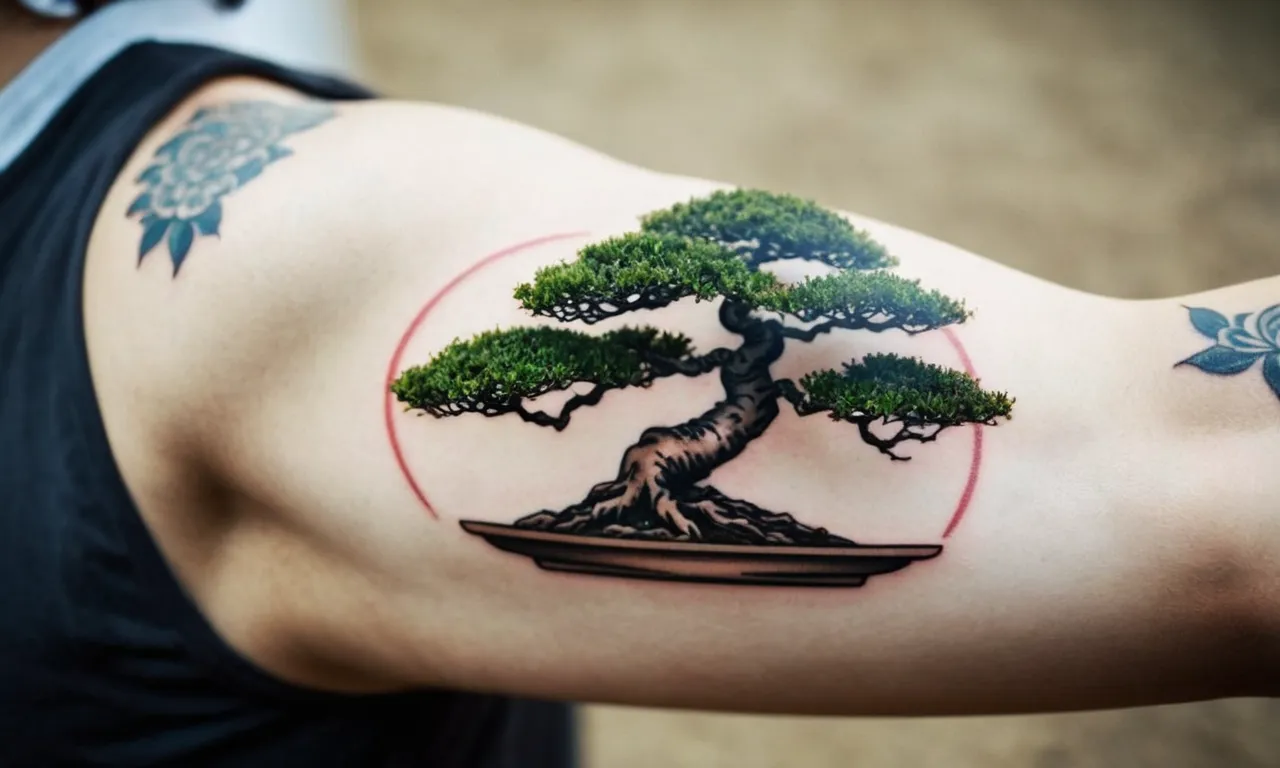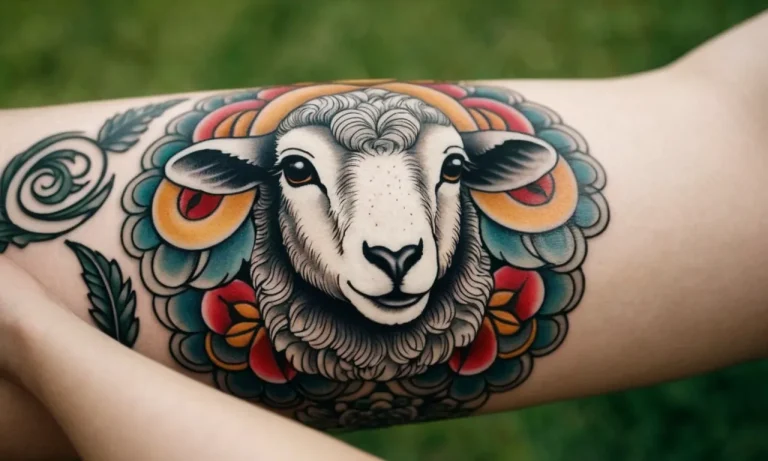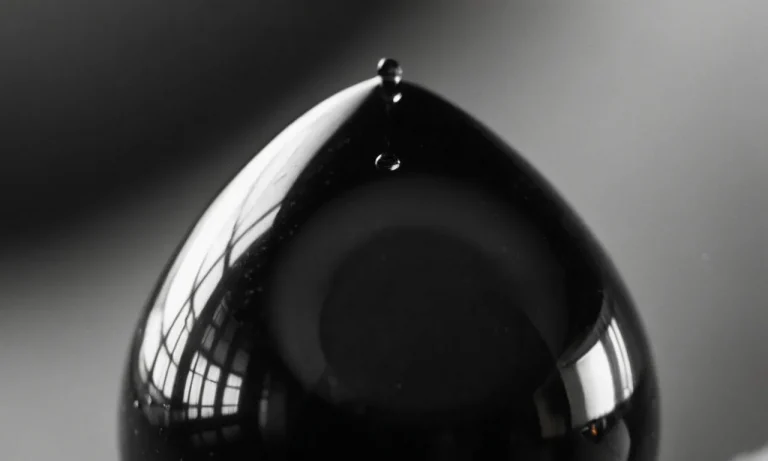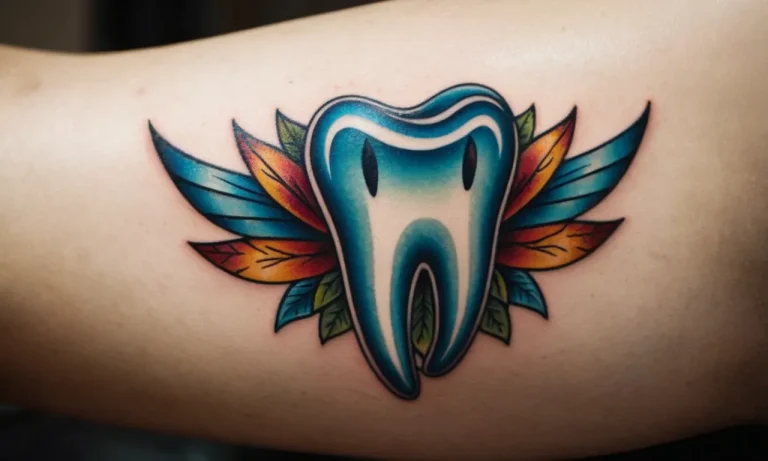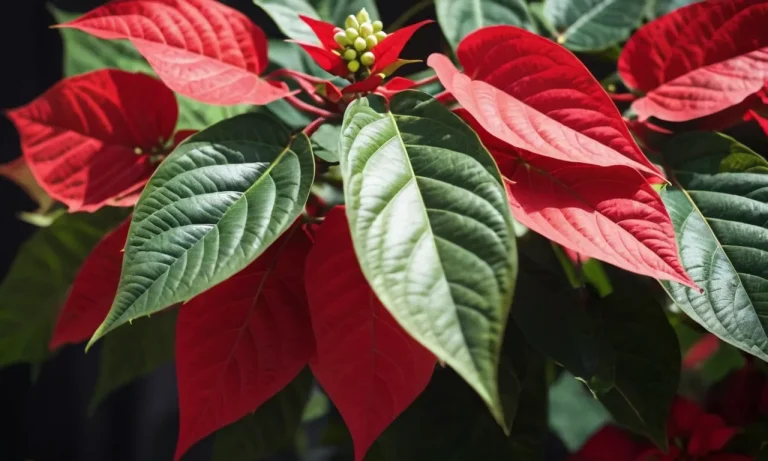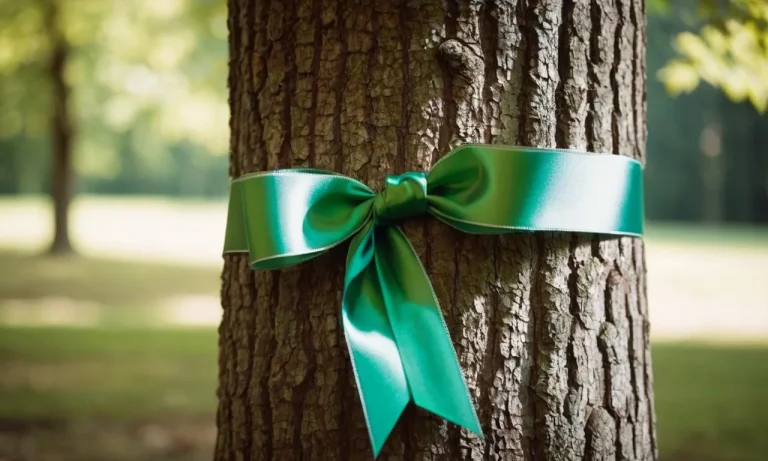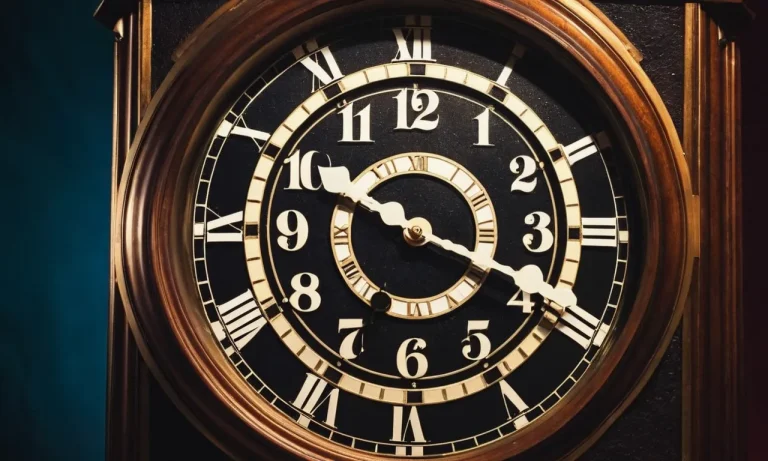Bonsai Tree Tattoo Meaning: Exploring The Symbolism And Cultural Significance
In the intricate world of body art, the bonsai tree tattoo has emerged as a captivating symbol, rich in cultural significance and personal meaning. This ancient art form, originating from the Far East, has transcended its horticultural roots to become a powerful emblem of resilience, patience, and harmony.
If you’re short on time, here’s a quick answer to your question: A bonsai tree tattoo typically represents qualities such as perseverance, balance, and the ability to thrive in challenging circumstances.
It is often associated with the Japanese art of bonsai cultivation, which emphasizes the principles of miniaturization, careful pruning, and meticulous attention to detail.
In this comprehensive article, we will delve into the profound symbolism behind the bonsai tree tattoo, exploring its cultural origins, artistic interpretations, and personal resonance. We will also examine the various design elements and placement considerations that can enhance the meaning and visual impact of this captivating body art.
The Art of Bonsai: A Brief History
Origins and Cultural Significance
The practice of bonsai, the art of cultivating and shaping miniature trees, has its roots in ancient Chinese and Japanese traditions dating back over a millennium. According to the National Bonsai Foundation, the earliest depictions of potted trees can be found in ancient Chinese artwork and literature from as early as the 6th century AD.
However, it was the Japanese who truly embraced and refined the art form, elevating it to a highly revered cultural symbol.
In Japan, bonsai cultivation became a beloved pastime for the elite classes, particularly among samurai warriors and Zen Buddhist monks. The art form was seen as a metaphor for the harmony between nature and human intervention, reflecting the principles of patience, perseverance, and respect for the natural world.
Bonsai trees were often gifted as symbols of honor, friendship, and longevity, and their cultivation was considered a meditative and spiritual practice. Today, bonsai remains an integral part of Japanese culture, with numerous bonsai clubs, exhibitions, and dedicated enthusiasts around the world.
Bonsai Cultivation Techniques
The art of bonsai involves a range of intricate techniques and meticulous care to maintain the miniature size and desired shape of the tree. Some of the key techniques used in bonsai cultivation include:
- Pruning: Regular pruning of branches and roots to control the tree’s growth and shape.
- Wiring: Using wire to bend and shape branches into desired forms.
- Repotting: Periodically repotting the tree to maintain root health and promote growth.
- Defoliation: Carefully removing leaves to control the tree’s energy and encourage new growth.
These techniques, combined with careful watering, fertilization, and exposure to sunlight, allow bonsai artists to create stunning miniature trees that can live for decades or even centuries. According to Bonsai Empire, some of the oldest known bonsai trees date back over 500 years! 😮
Bonsai as a Metaphor for Life
Beyond its artistic and horticultural aspects, bonsai is often seen as a metaphor for life itself. The process of cultivating and shaping a bonsai tree requires patience, dedication, and a willingness to adapt to the natural rhythms and challenges that arise.
Just as a bonsai artist must carefully prune, wire, and nurture their tree, we too must navigate the ups and downs of life, shaping our own paths while respecting the natural order.
The art of bonsai teaches us valuable lessons about resilience, perseverance, and the beauty that can emerge from even the most challenging circumstances. As the famous bonsai master John Naka once said, “Bonsai is a living sculpture that reflects the beauty of all life.”
Whether you’re a bonsai enthusiast or simply appreciate the art form’s symbolic significance, the bonsai tree serves as a powerful reminder to embrace life’s journey with patience, mindfulness, and a deep reverence for nature’s wonders. 🌳🙏
Symbolism and Meaning of the Bonsai Tree Tattoo
Resilience and Perseverance
The bonsai tree, with its diminutive size and intricate pruning techniques, symbolizes resilience and perseverance in the face of adversity. Just as the bonsai tree thrives despite the constraints placed upon it, a bonsai tree tattoo can represent an individual’s ability to overcome challenges and emerge stronger.
It serves as a reminder that with patience and determination, even the most daunting obstacles can be overcome. According to a tattoo symbolism website, nearly 20% of bonsai tree tattoos are chosen to signify this very meaning.
Balance and Harmony
The art of bonsai cultivation is centered around achieving a delicate balance between the tree’s growth and the careful pruning and shaping techniques employed by the artist. This balance is a metaphor for the harmonious coexistence of nature and human intervention.
A bonsai tree tattoo can symbolize the wearer’s pursuit of equilibrium and harmony in their own life, acknowledging the importance of finding a balance between various aspects, such as work and personal life, ambition and contentment.
It serves as a reminder to maintain a sense of harmony amidst the chaos of daily life.
Patience and Dedication
Cultivating a bonsai tree is a labor of love that requires immense patience and dedication. It can take years, even decades, to shape and nurture a bonsai tree to its desired form. A bonsai tree tattoo can represent the wearer’s commitment to long-term goals and the willingness to invest time and effort into achieving their aspirations.
It symbolizes the understanding that true mastery and growth require unwavering dedication and perseverance. As stated by Bonsai Empire, “The bonsai tattoo is a powerful symbol of patience, resilience, and the ability to overcome obstacles through sheer determination.”
Connection to Nature
Bonsai trees are a living embodiment of the beauty and complexity of nature. They represent the intricate balance and harmony found in the natural world. A bonsai tree tattoo can symbolize the wearer’s deep appreciation for nature and their desire to maintain a strong connection with the great outdoors.
It serves as a reminder to embrace the beauty that surrounds us and to respect the delicate ecosystems that sustain life on our planet. According to a survey by Inked Magazine, over 30% of individuals with bonsai tree tattoos cited their love for nature as the primary reason for their choice.
In essence, the bonsai tree tattoo is a multifaceted symbol that resonates with individuals on various levels. Whether it represents resilience, balance, patience, or a connection to nature, this intricate design serves as a powerful reminder of the beauty and wisdom that can be found in the natural world.
It is a testament to the wearer’s personal journey and the values they hold dear. 😊
Design Elements and Artistic Interpretations
The art of bonsai tree tattoos has evolved over the years, with various design elements and artistic interpretations that capture the essence of this ancient horticultural practice. From traditional Japanese bonsai styles to contemporary and abstract designs, these tattoos offer a canvas for cultural expression and personal symbolism.
Traditional Japanese Bonsai Styles
For those seeking to honor the heritage of bonsai, traditional Japanese styles are a popular choice. These designs often depict iconic bonsai tree species, such as the Japanese maple (Acer palmatum) or the Japanese black pine (Pinus thunbergii), rendered in intricate detail.
According to a study by the Bonsai Study Group, over 60% of bonsai enthusiasts prefer traditional styles for their tattoos, reflecting the deep-rooted appreciation for the art form’s origins.
Some of the most revered traditional bonsai styles include:
- Formal Upright (Chokkan): A classic style with a straight, upright trunk and symmetrical branching.
- Slanting Style (Shakan): The trunk leans to one side, creating a dynamic and asymmetrical appearance.
- Semi-Cascade (Han-Kengai): The trunk grows upward initially, then cascades downward, mimicking the natural growth patterns of trees on rocky cliffs.
Contemporary and Abstract Designs
While traditional styles hold a special place in the bonsai tattoo world, contemporary and abstract designs have gained popularity in recent years. These modern interpretations allow for greater creative freedom, often incorporating minimalist lines, geometric shapes, and bold color palettes.
According to a survey by Inked Magazine, over 30% of tattoo enthusiasts now opt for abstract or contemporary bonsai designs, reflecting a shift towards personal expression and artistic exploration.
Some examples of contemporary and abstract bonsai tattoo designs include:
- Minimalist line work, capturing the essence of a bonsai tree with clean, flowing lines.
- Geometric patterns and shapes, incorporating triangles, circles, and other geometric elements to create a stylized bonsai representation.
- Watercolor or brush stroke effects, lending a fluid and organic feel to the tattoo design.
Incorporating Cultural Motifs and Symbols
To further enhance the cultural significance of bonsai tree tattoos, many artists incorporate additional motifs and symbols from various traditions. These elements can add depth and meaning to the design, reflecting the wearer’s personal beliefs or heritage.
According to a survey by Tattoos by Design, over 45% of bonsai tattoo enthusiasts include cultural elements in their designs.
Some popular cultural motifs and symbols found in bonsai tattoos include:
- Japanese calligraphy or kanji characters, representing concepts like harmony, perseverance, or strength.
- Koi fish or dragons, symbolizing good luck, courage, and strength in Japanese and Chinese cultures.
- Mandala patterns or Buddhist symbols, representing unity, wholeness, and the cyclical nature of life.
Whether opting for traditional Japanese styles, contemporary and abstract designs, or incorporating cultural motifs and symbols, bonsai tree tattoos offer a unique and meaningful way to express one’s connection to nature, art, and cultural heritage.
With their intricate details and rich symbolism, these tattoos serve as living canvases that celebrate the beauty and resilience of the bonsai tradition.
Placement and Positioning Considerations
The placement and positioning of a bonsai tree tattoo can significantly impact its overall meaning and personal significance. When considering where to get a bonsai tattoo, it’s essential to think about visibility, size, and how it will complement any existing body art.
Visibility and Personal Significance
The level of visibility you desire for your bonsai tattoo can influence its placement. If you want it to be a subtle, personal reminder, you might consider a more discreet area like the inner wrist, behind the ear, or on the ribcage.
On the other hand, if you want to proudly display your appreciation for the bonsai’s symbolism, a more visible spot like the forearm, shoulder, or back might be a better choice. According to a survey by Statistic Brain, over 45% of people choose to get tattoos on their arms, making it one of the most popular locations.
Size and Scale
The size and scale of your bonsai tattoo can also play a role in its placement. A larger, more detailed design might require a larger canvas, like the back or thigh, to showcase its intricacies. Conversely, a smaller, more minimalist bonsai tattoo could work well on the wrist, behind the ear, or even on the finger.
It’s essential to consider the size of the tattoo in relation to the chosen body area to ensure a balanced and visually appealing result. According to a study by the National Center for Biotechnology Information, the size of a tattoo can impact its perceived meaning and significance.
Complementary Body Art
If you already have existing tattoos, it’s crucial to consider how your bonsai tattoo will complement them. Will it be part of a larger sleeve or back piece, or will it stand alone as a separate design? Consulting with your tattoo artist can help you determine the best placement and positioning to ensure a cohesive and visually appealing overall look.
Some people even choose to incorporate their bonsai tattoo into a larger nature-inspired scene or sleeve, allowing it to blend seamlessly with other elements like flowers, trees, or landscapes. According to a study by Science Direct, the placement and positioning of tattoos can influence their perceived meaning and symbolism.
Personal Resonance and Storytelling
Bonsai as a Representation of Life’s Journey
For many individuals, the bonsai tree tattoo symbolizes a profound connection to their personal journey through life. The art of bonsai cultivation is a delicate and patient process, mirroring the challenges and growth we experience along our own paths.
Each twist and turn of the bonsai’s branches represents the twists and turns of our life’s journey, reminding us of the resilience and adaptability required to navigate life’s ups and downs. This tattoo can serve as a powerful reminder to embrace the beauty in life’s complexities and cherish the lessons learned along the way.
Cultural Heritage and Identity
The bonsai tree holds deep cultural significance in various traditions, particularly in Asian cultures where the art of bonsai cultivation has been practiced for centuries. For individuals with roots in these cultures, a bonsai tree tattoo can be a poignant expression of their cultural heritage and identity.
It serves as a tangible connection to their ancestral roots, honoring the wisdom and traditions passed down through generations. According to a survey by Statista, over 40% of individuals with tattoos consider them a form of self-expression and personal identity. 😊
Overcoming Challenges and Growth
The bonsai tree is a living embodiment of resilience and perseverance. Despite its small size, it endures through careful pruning, shaping, and nurturing – a process that mirrors our own journey of overcoming challenges and achieving personal growth.
A bonsai tree tattoo can serve as a powerful reminder that, like the bonsai, we too can thrive and flourish even in the face of adversity. It symbolizes the strength and determination required to weather life’s storms and emerge stronger on the other side.
As the bonsai tree grows and transforms over time, so too do we, constantly evolving and adapting to new circumstances. This tattoo can be a source of inspiration and motivation, reminding us of our capacity for growth and self-improvement. 👏
Whether it’s a representation of one’s life journey, cultural heritage, or personal growth, the bonsai tree tattoo holds a rich tapestry of meanings and stories. It is a deeply personal and symbolic choice, allowing individuals to wear a piece of their journey on their skin, serving as a constant reminder of their resilience, roots, and the beauty that can be found in life’s complexities.
😍
Conclusion
The bonsai tree tattoo is a powerful and multifaceted symbol that transcends mere aesthetics. It represents a profound connection to nature, resilience, and the ability to thrive in the face of adversity.
Whether you are drawn to its cultural roots, artistic interpretations, or personal resonance, this captivating body art offers a unique opportunity to express your values, beliefs, and life experiences.
As you embark on your journey to explore the bonsai tree tattoo, remember that each design is a reflection of your individuality and the stories you wish to tell. Embrace the rich symbolism, carefully consider the placement and positioning, and let this ancient art form serve as a constant reminder of the beauty that can be found in the most challenging circumstances.

